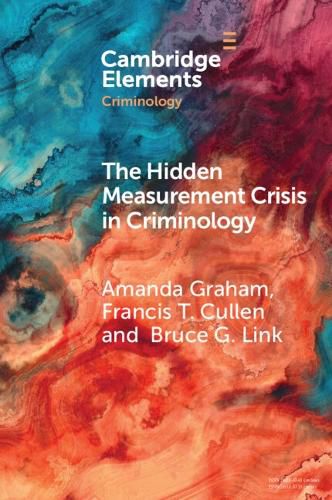Readings Newsletter
Become a Readings Member to make your shopping experience even easier.
Sign in or sign up for free!
You’re not far away from qualifying for FREE standard shipping within Australia
You’ve qualified for FREE standard shipping within Australia
The cart is loading…






The field of criminology is limited by a 'hidden' measurement crisis. It is hidden because scholars either are not aware of the shortcomings of their measures or have implicitly agreed that scales with certain properties merit publication. It is a crisis because the approaches used to construct measures do not employ modern systematic psychometric methods. As a result, the degree to which existing measures have methodological limitations is unknown. The purpose of this Element is to unmask this hidden crisis and provide a case study demonstrating how to build a measure of a prominent criminological construct through modern systematic psychometric methods. Using multiple surveys and item response theory, it develops a ten-item scale of procedural justice in policing. This can be used in primary research and to adjudicate existing measures. The goal is to reveal the nature of the field's measurement crisis and show a strategy for solving it.
$9.00 standard shipping within Australia
FREE standard shipping within Australia for orders over $100.00
Express & International shipping calculated at checkout
The field of criminology is limited by a 'hidden' measurement crisis. It is hidden because scholars either are not aware of the shortcomings of their measures or have implicitly agreed that scales with certain properties merit publication. It is a crisis because the approaches used to construct measures do not employ modern systematic psychometric methods. As a result, the degree to which existing measures have methodological limitations is unknown. The purpose of this Element is to unmask this hidden crisis and provide a case study demonstrating how to build a measure of a prominent criminological construct through modern systematic psychometric methods. Using multiple surveys and item response theory, it develops a ten-item scale of procedural justice in policing. This can be used in primary research and to adjudicate existing measures. The goal is to reveal the nature of the field's measurement crisis and show a strategy for solving it.